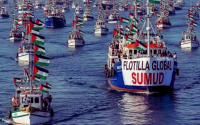31 December 2006Marie Woolf
The swan, beautiful, graceful and protected by Royal Charter, is becoming a nuisance and a threat to the environment.
After a string of mild winters, the bird's numbers are increasing exponentially and there are now so many of them they are threatening pond ecosystems.
Since 1990 the population of mute swans has increased by a quarter, with more than 30,000 of the birds living in England. The numbers have grown so rapidly that flocks of up to 50 juveniles are congregating in rivers where they feed avidly, stripping them of vegetation and driving out other river birds.
The swans' burgeoning numbers are now threatening fish, birds and other animals that rely on the vegetation to survive. They are also depriving fish of their camouflage, making them more vulnerable to predators such as herons and kingfishers.
Anglers have formally complained to the Government that there is now a shortage of fish and have asked for the swans to be culled. But ministers say they are powerless to act because most swans are owned by the Queen or protected from culling by law.
"There are more and more swans and they are really threatening biodiversity. We can't do anything because they are heavily protected," said one ministerial source.
Among the species under threat from the swans are migratory sea trout, sticklebacks, Atlantic salmon and perch. Birds including the yellow wagtail and green sandpiper also rely on the vegetation that swans eat.
Swans survival rates have been helped not only by unusually mild weather, but also by the phasing out of lead in fishing tackle and in gunshot which poisoned swans in the past. The swans are forming unusually large flocks before they find their mate for life, at which time they establish their own territory and feed in pairs, posing less of a threat to the habitat. Experts say they have never witnessed so many swans flocking in one place.
The Government's nature watchdog Natural England is now assessing the impact of the birds on the ecosystem. They are focusing on the River Avon, where up to 180 species of aquatic plant have been recorded and flocks of 50 swans have been spotted congregating for a week at a time.
Conservationists say they will not consider killing swans until all other options, including relocation, have been considered. Since the 12th century, all unmarked swans on the Thames have been owned by the monarch. Others are protected by strict laws. But conservationists are considering applying for the right to reduce swan numbers by removing eggs from their nests or even oiling eggs so they do not hatch.
"Natural England will be working with river keepers from January to monitor the whole river system to unravel the possible impact on insects, plants and animals that rely on the river for survival," said a spokeswoman. "Once we have a better idea of what is happening we can plan a way forward. Any control of numbers would be a last resort, and we would remind members of the public that swans are protected under the Wildlife and Countryside Act and it is illegal for anyone to kill or injure them."
Recipe: A medieval way to roast a swan
Ingredients: One swan (with giblets); lard; salt; broth; toasted breadcrumbs; ginger; galingale (an aromatic root); red wine vinegar
To prepare a swan (from Middle English): Wash him, & do on a spit & lard him fair & roast him well; & make a fair carving. Sauce: Take the issue [giblets] & wash it well, & scour the guts well with salt, & boil the issue all together, & wash it well & hew it small, & take bread & powder of ginger & of galingale & grind together & temper it with the broth, & colour it with the blood. And when it is boiled & ground & strained, salt it, & boil it & season it with vinegar.
http://news.independent.co.uk/environment/article2114501.ece






